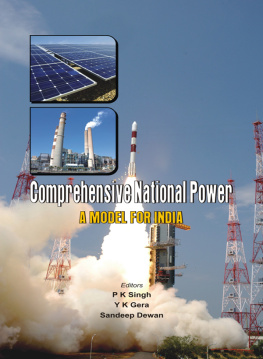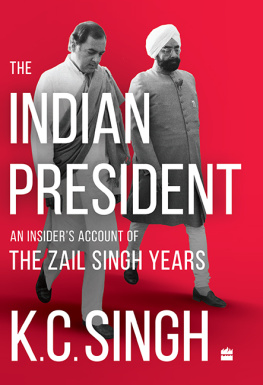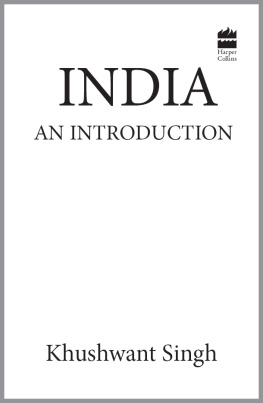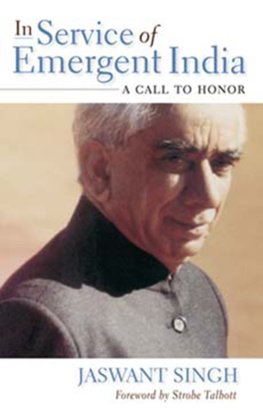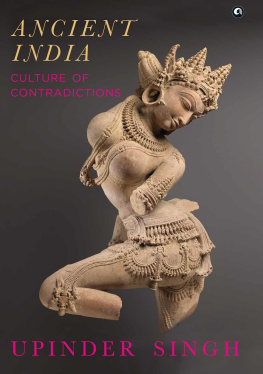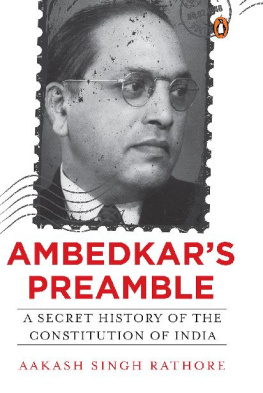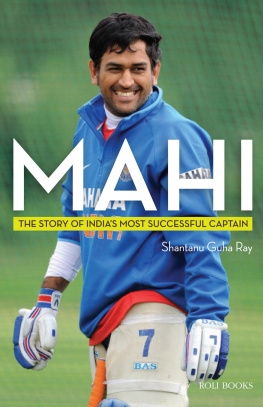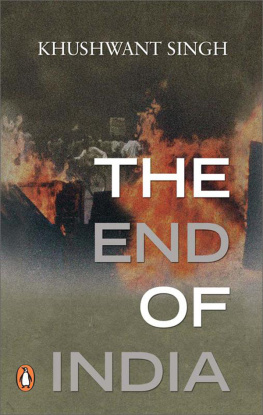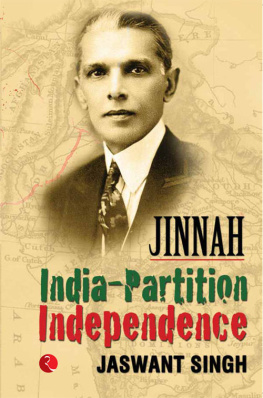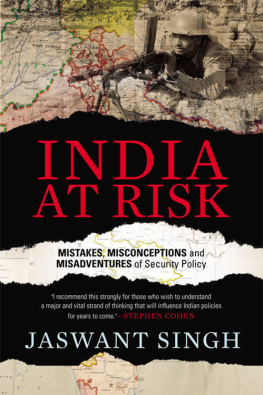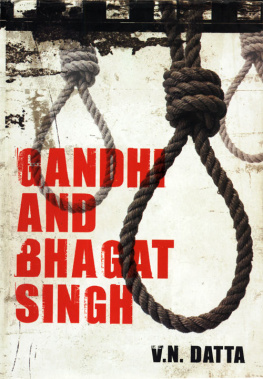Published by
Vij Books India Pvt Ltd
(Publishers, Distributors & Importers)
2/19, Ansari Road, Darya Ganj
New Delhi - 110002
Phones: 91-11-43596460, 91-11- 47340674
Fax: 91-11-47340674
e-mail :
web: www.vijbooks.com
Copyright 2013, United Service Institution of India, New Delhi
ISBN: 978-93-82573-51-7
All rights reserved
No part of this book may be reproduced, stored in a retrieval system, transmitted or utilised in any form or by any means, electronic, mechanical, photocopying, recording or otherwise, without the prior permission of the copyright owner. Application for such permission should be addressed to the publisher.
The views expressed in the book are of the authors/contributors and not necessarily those of the United Service Institution of India / publishers.
Introduction
The concept of National Power has exercised the minds of strategists and thinkers across the globe since times immemorial. Comprehensive National Power or CNP in short is a concept which refers to the overall power of a Nation State and is a conglomeration of a wide range of national assets capabilities and potential. Some of the ingredients that are commonly measured to determine CNP are military and economic strength, potential of the population based on health, education and intellectual capacity, natural resources, scientific and technological output, governance and a host of other equally relevant parameters.
The modern Chinese methods of measuring CNP that were first undertaken in the decade of the 1980s, and thereafter, subjected to continuous rigorous study are perhaps the most cited-among CNP assessment models. However, the Chinese were not the first to seriously study the constituents of national power. Soon after the end of the Second World War coinciding with the beginning of the cold war scholars began to delve into matrices that determine a nations relative power in the global order. Broadly the chronological sequence of some of the better known theses is as follows:-
(a)The earliest equation for calculating national power was defined by Klause Knorr in 1956 and included economic capabilities, administrative competitiveness and the ability to mobilize for war.
(b)Clifford German produced a complex non-linear multivariable index in 1960. In his hypothesis nuclear weapons capabilities was central to determining power equations.
(c)A semi non-linear multivariable index was proposed by Wilhelm Fucks in 1965.
(d)Ray Cline in 1975 produced a national power equation in which both hard power and soft power capacities were built in. This, in our view was the first CNP formula which with some variants was used by the US Army to develop long term trends in the international system.
(e)Ashley Tellis and other scholars of RAND in the year 2000 advanced their concept for determining CNP. However it is not known if they published any calculation equation or results of computing for international comparison.
The Chinese scholars also propagated many methods of CNP calculation. Some of these are:-
(a)The Chinese Academy of Social Sciences advanced a system in 1996 which covers eight aspects and 64 indicators.
(b)The Chinese Military Academy represented by Huang Suofeng in 1996 and 1999 spelt out a method in which he held that CNP should be the organic integration of capacities of survival, development and coordination.
(c)The China Institute of Contemporary International Relations gave out an analytical hierarchical approach to determining CNP.
(d)Hu Angang and Men Honghua gave out their formula for CNP which defines eight components of strategic resources and 23 major indicators to constitute a computable CNP equation. Their equation adopts different weighted averages for different indicators and is dynamic in nature.
Within the Chinese political thought, the main goal of the Chinese State is to maximize Chinas CNP. The inclusion of economic and cultural factors and soft power measures within most CNP indices is intended to prevent China from making the mistake of the Soviet Union in over-investing in the military i.e. hard power at the expense of the civilian economy.
In India too, quite a few attempts have been made to compute and benchmark Indias CNP against major nations. On close scrutiny, these appear to have lacked depth and omitted to include all relevant parameters that impact on the totality of CNP. For instance, none of the studies undertaken so far gave a reasonably accurate measure of military power and perhaps more importantly, the contribution of military strategy and a cohesive national defence policy towards national power. Again, most studies have ignored the role of foreign policy in shaping national power which is a major shortcoming. Political factors like stability and good governance were not taken into account and natural resources and environmental issues ignored. Also, most of the studies placed an over-reliance on secondary data without tempering that data through the filter of expert opinion. All these factors add up to reinforce the case for a de-novo look at the concept of CNP in the Indian context.
Any workable CNP model will necessarily see interaction between hard power, soft power and transformation variables in some form or the other. In any new model, it is the determinants, sub-factors and indices, which perhaps will be the main drivers of change. The new model will also have to examine the merits and de-merits of absolute quantification vis-vis the relative ranking approach.
The impact of 21st Century issues like the ferment in the Arab world, the turmoil within Islam, terrorism, fourth/ fifth generation warfare, competition for scarce resources, environmental degradation, sustainable development, aging population in the developed world or the youth bulge in the developing /underdeveloped regions etc will also have to be factored for any study to be sufficiently authoritative.
It is in this context that the USI has attempted to give a de-novo look to the subject of Indias CNP. Rear Admiral Raja Menon steered this study on Indias Comprehensive National Power Model for India and oversaw its conduct and provided guidance and valuable suggestions. A special mention goes out to Dr Montek Singh Ahluwalia, Deputy Chairman, Planning Commission for having given an insight on Indias Transit from 2010 to 2025 The Biggest Hurdles during the seminar on the project. The study team comprised Mr Mohan Guruswamy, Ambassador Kanwal Sibal, Mr Naresh Saxena, Mr Prakash Singh, Lt Gen Vinay Shankar, Vice Adm Vijay Shankar, Mr Dipankar Gupta, Mr Amitabh Kant, Mr Manohar Thyagaraj, Mr Jayadeva Ranade, Capt PK Ghosh, Mr Zorawar Daulet Singh, Maj Gen YK Gera and Capt Sandeep Dewan; each of whom has done yeoman service towards the study.
We believe this is the first comprehensive study in India that has delved into the determinants of Comprehensive National Power and then attempted to arrive at conclusions of where India currently figures in the global order. The study has also analysed each of the identified determinants with a view to suggesting remedial measures that would if followed upon and implemented, enhance our CNP.
The CNP Project that the USI has undertaken is a foundational work for all future studies on the subject. It is expected that more such studies will follow. And these would further refine methodologies and perhaps lead us to different sets of factors and matrices. Eventually we hope that there would be awareness of the concept of CNP and a national consensus will emerge on the steps India must take to further develop its CNP in order to realize the Nations aspirations.

